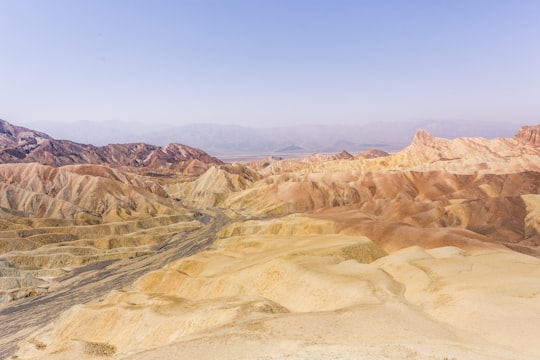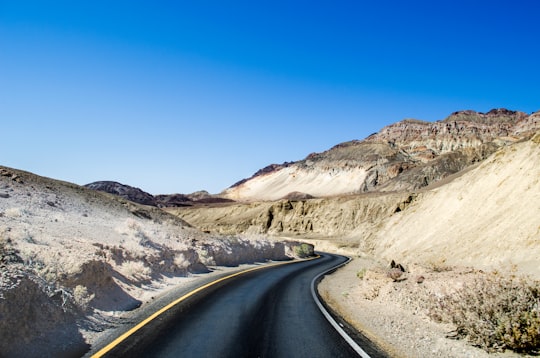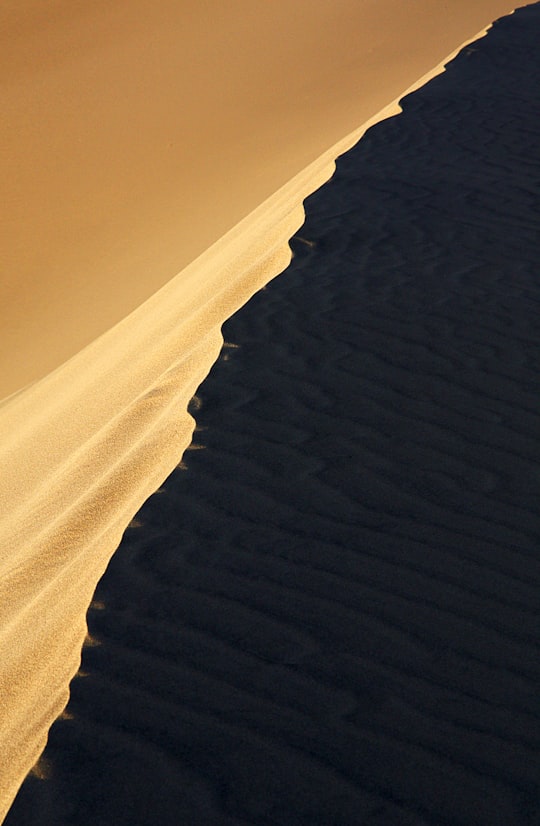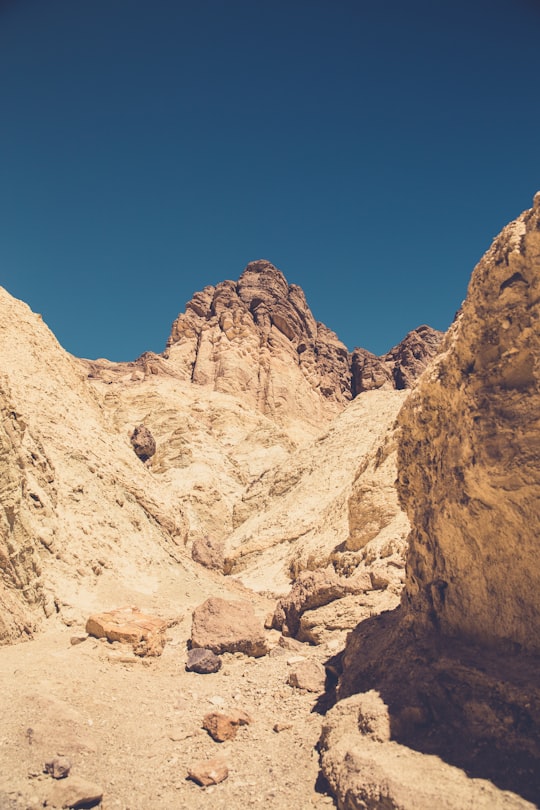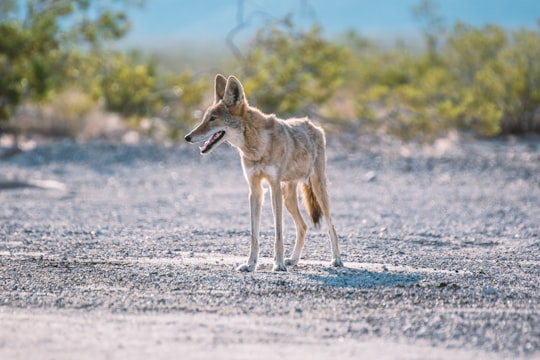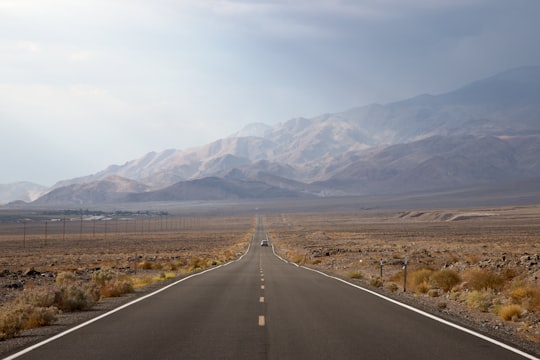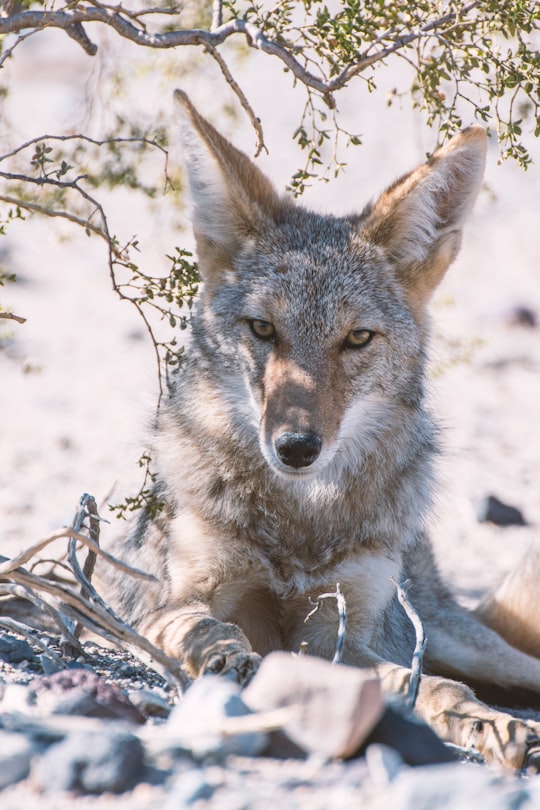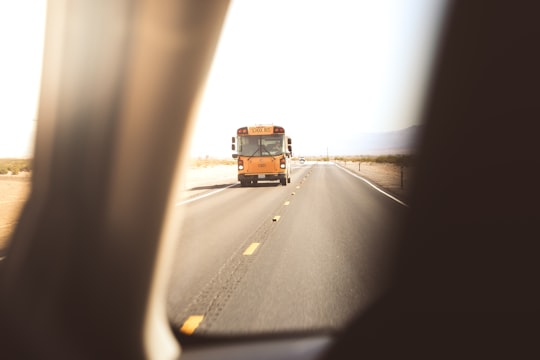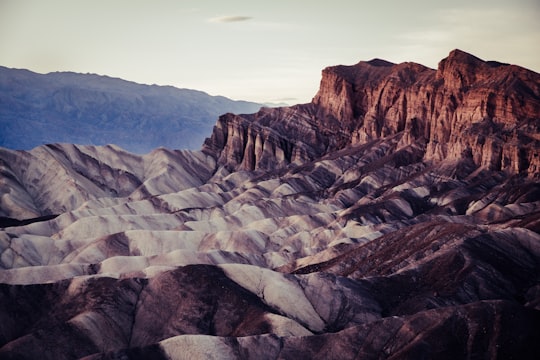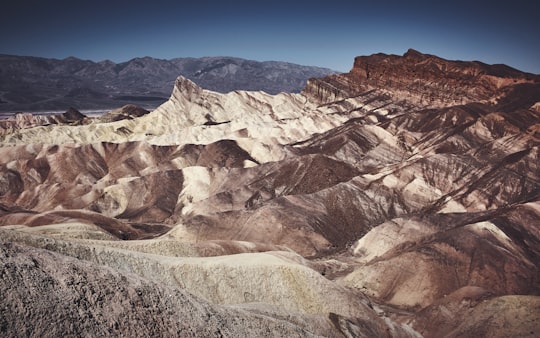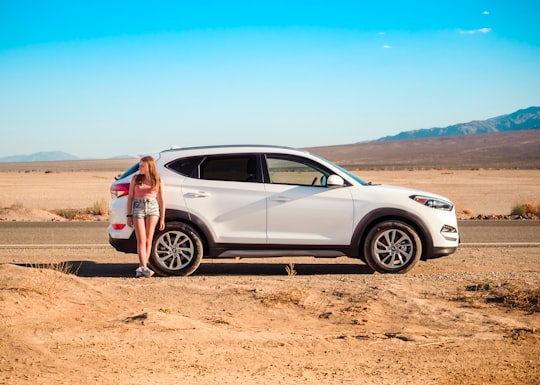Travel Guide of Death Valley National Park in United States by Influencers and Travelers
Death Valley National Park is an American national park that straddles the California–Nevada border, east of the Sierra Nevada.
Pictures and Stories of Death Valley National Park from Influencers
20 pictures of Death Valley National Park from Pablo García Saldaña, Wilson Ye, salvatore ventura and other travelers
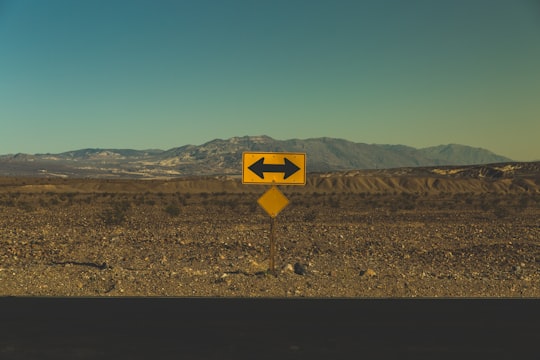
- Two directions sign ...click to read more
- Experienced by @Pablo García Saldaña | ©Unsplash
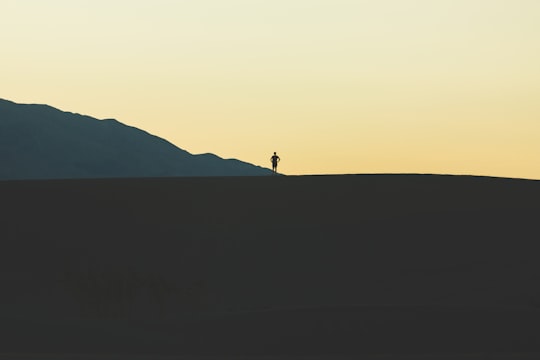
- Hiking in Death Valley ...click to read more
- Experienced by @Pablo García Saldaña | ©Unsplash

- long road, straight stretch of long desert road. ...click to read more
- Experienced by @salvatore ventura | ©Unsplash
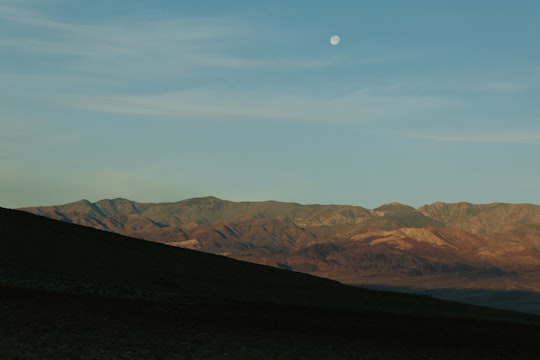
- Moon over Death Valley ...click to read more
- Experienced by @Pablo García Saldaña | ©Unsplash
Plan your trip in Death Valley National Park with AI 🤖 🗺
Roadtrips.ai is a AI powered trip planner that you can use to generate a customized trip itinerary for any destination in United States in just one clickJust write your activities preferences, budget and number of days travelling and our artificial intelligence will do the rest for you
👉 Use the AI Trip Planner
How to visit Death Valley National Park ?
Why travel there?
Death Valley National Park, located in eastern California, is a must-visit destination for adventure seekers, nature lovers, and photographers. As the hottest, driest, and lowest national park in the United States, it offers a unique and otherworldly landscape, featuring rolling sand dunes, colorful badlands, salt flats, and towering peaks. The park's rich history, diverse wildlife, and stargazing opportunities make it an unforgettable experience.
How to get there?
The most convenient way to reach Death Valley National Park is by flying to Las Vegas or Los Angeles and renting a car. From Las Vegas, it's about a 2-hour drive, and from Los Angeles, it's approximately a 4-hour drive. There's no public transportation to the park, so having a car is essential for exploring the vast area.
What to book in advance?
Due to the park's popularity and limited accommodation options, it's recommended to book lodging well in advance. If you plan on camping, some campgrounds accept reservations, while others are first-come, first-served. It's also advisable to book guided tours, such as the Scotty's Castle Tour or the Racetrack Playa tour, in advance.
What are the costs?
The entrance fee for Death Valley National Park is $30 per vehicle, valid for seven days. Accommodation costs vary depending on the type and location, with hotel rooms ranging from $100 to $300 per night and campsites costing between $16 and $36 per night. Gas, food, and guided tours are also additional expenses to consider.
What are the best things to do?
Some must-do activities in Death Valley National Park include visiting the Mesquite Flat Sand Dunes, exploring the salt flats at Badwater Basin, hiking the scenic Golden Canyon Trail, and witnessing the stunning sunrise at Zabriskie Point. Don't miss the opportunity to drive along the picturesque Artist's Drive and take in the breathtaking views from Dante's View.
Where to eat?
For dining options within the park, consider stopping at The Ranch at Death Valley, which offers a casual dining experience at The Last Kind Words Saloon, or enjoy fine dining at The Inn at Death Valley. For a quick bite, the Stovepipe Wells Village offers a small restaurant and a general store with a limited selection of groceries and snacks.
Where to stay?
Accommodation options within the park include The Ranch at Death Valley, offering a family-friendly atmosphere, and The Inn at Death Valley, a luxury hotel with stunning views. For a more budget-friendly option, consider staying at one of the park's campgrounds, such as Furnace Creek or Stovepipe Wells.
Off the beaten path:
For an unusual travel experience in Death Valley, consider visiting the mysterious Racetrack Playa. Here, you'll find large rocks, known as "sailing stones," that have seemingly moved on their own, leaving trails in the cracked mud surface. To reach this remote location, a high-clearance 4WD vehicle is required, and it's recommended to join a guided tour or obtain detailed directions from the park's visitor center.
Book your Travel Experience at Death Valley National Park
Discover the best tours and activities around Death Valley National Park, United States and book your travel experience today with our booking partners
Map of Death Valley National Park
View Death Valley National Park on a map
More Travel spots to explore around Death Valley National Park
Click on the pictures to learn more about the places and to get directions
Discover more travel spots to explore around Death Valley National Park
🛣️ Road trip spots ️🏜️ Badlands spots ️🏜️ Desert spots 🌲 Ecoregion spots ⛰️ Hill spots 🐾 Wildlife spots ️🏜️ Dune spots 🏕️ Camping spots 🏖️ Shore spots 🛣️ Off-roading spots Driving spotsLearn More about Death Valley National Park
Death Valley, the largest national park outside of Alaska, is an almost immeasurable place.
The park's 1.34 million-acre expanse includes mountain-sized dunes, below-sea-level salt flats, and colorful sandstone canyons, as well as a remarkable structure, Scotty's Castle, left by an eccentric explorer.
Extremes are the norm: Death Valley is the hottest and driest place in the United States, with summer temperatures exceeding 120°F/49°C and average precipitation of 2 inches/5 cm per year.
So it can go up or down a lot; experience the heat or freeze with an incredible view of the desert. Death Valley offers the extremes of the scale.
Death Valley is a basin below sea level, the drought is constant and the record-breaking summer heat makes this valley a land of extremes. Land of extremes, because the high peaks of the valley are covered with snow in winter. The few storms that do occur bring with their fields of pretty wildflowers, and there are lush oases that are home to tiny fish and a rare refuge for wildlife and humans.
Death Valley National Park is located on both sides of the California-Nevada state line
- The park is relatively close to Las Vegas (Nevada), so this city is a good starting point to visit.
- The park borders the Mojave Desert to the southeast and Sequoia National Park to the west.
- The national park is composed of two main valleys: Death Valley and Panamint Valley.
Both valleys were formed over the past several million years and are bounded by mountain ranges from north to south. These and adjacent valleys follow the general trend of basin and range topography with one modification: there are parallel strike-slip faults perpendicularly bounding the central extent of Death Valley.
The result of this shear action is the additional extension in the central part of the valley causing a slight widening and more sinking there.
In other words, or explained another way, millions of years ago, the Death Valley and Panamint Valley regions began to separate, creating two distinct valleys. Before this, the rocks found today in the Panamint Range were located atop today's Black Mountains and in the Cottonwood Mountains. The lateral and vertical movement of these rocks was caused by normal fault movement.
Frequently Asked Questions by Travelers planning a trip to Death Valley National Park
This viewpoint is located at an elevation of over 6,000 feet on a ridge in the Black Mountains and the views of Death Valley are nothing short of spectacular.
The heat here is suffocating, but the scenery is spectacular, unearthly, and worth the heat.
SPRING is the best time to visit Death Valley. Warm, sunny days with a chance to see spring wildflowers are a big draw.
SUMMER starts early in Death Valley. By May, the valley can be very warm.
FALL arrives in late October, with warm but pleasant temperatures and generally clear skies.*
WINTER has cold days, cold nights, and, rarely, thunderstorms. With snow covering the high peaks and low-angle winter light, this season is especially beautiful for exploring the valley.
♦ In general, visiting Death Valley National Park is usually done from north to south or south to north, depending on the route you take. If you are coming from Las Vegas, you will enter from the south.
♦ You must take into account that this is a national park, you will have to pay the corresponding entrance fee.
If you need to buy a ticket, we inform you that, unlike other national parks, this one does not have the typical stands where a friendly Ranger sells you the ticket, here you will see a kind of service area, where there is a ticket machine
Death Valley National Park is more or less a two-hour drive from Las Vegas.
Once you pass this town, about 5 miles or so, you need to take Bell Vista Road.
you will need to continue on this road for about 42 kilometers until it joins US190, which is the road that will take you to the entrance of Death Valley. A little over 25 kilometers down the road you will see the Death Valley National Park sign.
Where to Stay near Death Valley National Park
Discover the best hotels around Death Valley National Park, United States and book your stay today with our booking partner booking.com
Popular destinations near Death Valley National Park
Disover the best Instagram Spots around Death Valley National Park here

